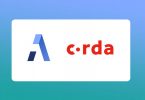One of the first challenges for new Distributed Ledger projects is which software to choose. There’s a lot of hype, so the only way to figure it out is by trying each platform, which is time-consuming. Insurance automation startup ChainThat has a team of technical founders, and they’ve been tinkering with the main options since 2015.
As a startup, they can be more frank, compared to some of the corporate projects where there’s a concern about being critical.
The team started with Ehereum, and moved onto Eris (Monax), Hyperledger Fabric, Quorum and eventually settled on R3’s Corda. In the early days, they didn’t want to take a bet on a single technology, so they created their own Insurance Blockchain Framework that sits in between the DLT side of things and what they expose to the customer. So they can support multiple DLT framework flavors but are bullish about Corda.
CEO David Edwards was direct in his views: “I don’t really see Enterprise Ethereum going anywhere for insurance.”
Hyperledger Fabric and scaling
They invested quite a bit of time elsewhere before settling on Corda.
“With Hyperledger Fabric, there have been so many issues with that, we’ve been on a long journey going through that.”
“It has the concept of channels and that would mean for a thousand trading parties each one of those is going to secure the data, each one is going to need it’s own individual channel between each party so you can imagine how many different channels that could potentially create for each party and that becomes unmanageable and unscalable.”
ChainThat is not the first to comment on this. SWIFT recently completed a POC with 34 banks. While praising the progress made in HyperLedger Fabric, the press release stated: “The PoC also showed that further progress is needed on the DLT technology itself before it will be ready to support production-grade applications in large-scale, mission-critical global infrastructures.”
“For example, while 528 channels were required in the PoC to ensure Nostro accounts would only be stored on the nodes of their account servicers and owners, to productize the solution, more than 100,000 channels would need to be established and maintained, covering all existing Nostro relationships, presenting significant operational challenges.”
We didn’t manage to get a counter argument in time for publication, but there’s a public email exchange.
Privacy and versioning
Back to ChainThat, David Edwards had reservations beyond scaling: “The other drawback is that if you’ve got a contract that you’ve created in Hyperledger Fabric, and you wanted to add a participant into that contract, but you didn’t want them to see the history of it, you’d then have to create a new contract to support that. Whereas with the Corda platform, it’s method with the unspent transaction outputs, allows us to maintain and control who gets to see what on a peer-to-peer basis.”
The privacy issue also relates to channels which are like mini blockchains. Privacy is associated with the entire channel which contrasts with Corda where permissions are set at the level of a contract or deal, as explained in this post from R3’s CTO.
Quorum
Edwards also expressed views on Quorum: “So we started on JP Morgan’s Quorum quite early on, but we still had to put some references back into the broadcast network, just to have that consistent layer. So you’ve basically got the public network and the private side of it. Everything on the private side still needs to be referenced back to the public side of it, and therefore you’ve still got some metadata related to the fact that transactions have taken place.”
There’s a separate article about why Galileo chose Quorum.
It’s worth bearing in mind that most DLT software is work in progress. For some, it’s a matter of ironing out the crinkles. For others, the flaws could be architectural.
Check back soon for further articles about the pros and cons of different technologies.






